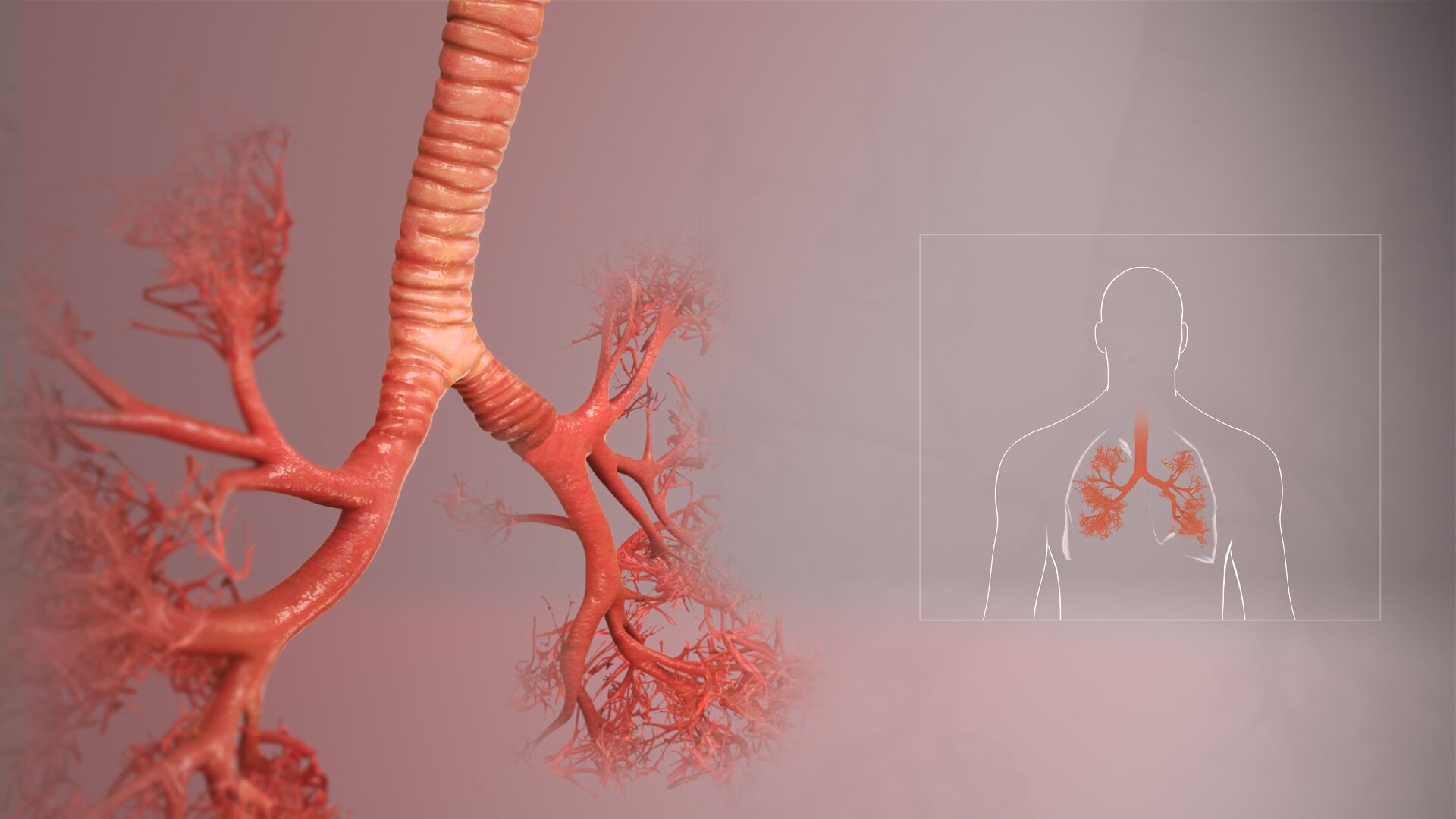
- The trachea divides to form the primary bronchi (right and left).
- Each of the right and left primary bronchi divide into lobar bronchi which supply air to each of the two lobes of the lungs.
- The lobar bronchi further split into segmental bronchi which supply air to the bronchopulmonary segments of the lungs.
- The bronchopulmonary segments are anatomically and physiologically distinct. This allows for the surgical removal of one diseased lung segment without adversely affecting the rest of the lung.
- The areas of tracheobronchial tree furthest from the trachea are called the distal respiratory.
Trachea
The trachea marks the beginning of the tracheobronchial tree. It arises as a continuation of the larynx and descends inferiorly, bifurcating at the level of the sternal angle (forming the right and left main bronchi). The trachea is held open by C-shaped cartilaginous rings. The trachea and bronchi are lined by ciliated pseudostratified columnar epithelium, interspersed by goblet cells, which produce mucus. The combination of sweeping movements by the cilia and mucus from the goblet cells helps trap inhaled particles and pathogens, moving them up out of the airways to be swallowed and destroyed.Bronchi
The trachea bifurcates into primary bronchi, that undergo further branching to produce the secondary bronchi. Each secondary bronchus supplies a lobe of the lung, and gives rise to several segmental bronchi inside it. In the bronchi, cartilage plates encircle most of the airway but gradually become thinner and disappear towards the periphery. Structurally, the bronchi are very similar to the trachea, except for differences in the shape of their cartilage. Together with branches of the pulmonary artery and veins, the main bronchi form the roots of the lungs.Bronchioles
The segmental bronchi undergo further branching to form numerous smaller airways, called the bronchioles. The bronchioles, being the smallest airways, have no cartilage or mucus membranes. Instead, their cells produce a surfactant lipoprotein to prevent their walls from sticking together during expiration. Conducting bronchioles transport air but do not perform gas exchange. Conducting bronchioles, eventually end as terminal bronchioles that branch even further into respiratory bronchioles, the lumens of which extend into alveoli. Alveoli are tiny, thin-walled sacs that function as the sites of gaseous exchange in the lungs. Close to 300 million alveoli present in adult lungs provide a large surface area for adequate gas exchange.Significance of branching
The branching pattern is, primarily, important in the distribution of inhaled particles. Moreover, the airway presents several unique features (including: a unique cartilaginous support, its relationship to important surrounding structures, and its segmental vascular supply) that account for the difficulties in the surgical management of pathological processes originating in those areas. It is important that the surgeon operating on the airway understands this particular anatomy, the limits of surgery, and most importantly the steps to be taken to avoid catastrophic complications.Asthma: A Guide Towards Better Life
Although asthma is largely a hereditary disease, of late, it’s onset is occurring because of environmental factors. Learning natural therapeutic techniques can be useful for children to counteract environmental triggers. Read More..








